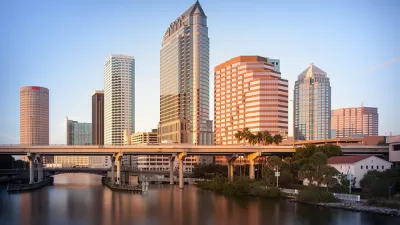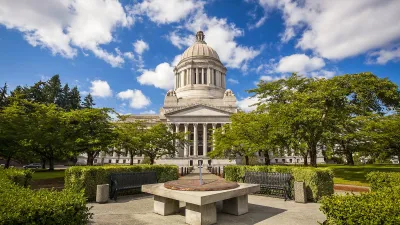The extremely strict proposal would eliminate sharp rent increases, but could stifle housing construction and worsen the city's housing crisis.

Bill Lindeke describes the details of St. Paul's proposed rent stabilization ordinance, which, if passed by voters in November, "would place unprecedented restrictions on the construction of new housing," leaving "an open question what it would do to the city’s housing market."
As proposed, "[t]he law would cap rent increases for all of the city’s 65,000 rented homes at 3% per year, but includes a complicated list of factors that allow landlords to apply for a variances — things like property taxes, maintenance issues, capital improvements (only if needed to bring a building to code), and a few others." According to Shane Phillips, author of The Affordable City, "historically, rent control policies have sometimes made housing crises worse by reducing the size and quality of the housing supply." Consequently, most of today's rent stabilization programs are "explicitly designed to ensure that the housing supply keeps growing."
Lindeke points to three issues with the St. Paul plan that could exacerbate the city's housing crisis. First, the policy does not exempt new construction, which could discourage developers from building in the first place. Second, the plan does not account fo inflation, yet "[a]lmost every other program is pegged somehow to the consumer price index (CPI) or enlists a committee that sets annual rates based on local conditions." The third factor is the unusual step of controlling rent on vacant units, rather than for each individual tenant, creating a situation "rife for potential corruption" and discrimination.
"if the HENS proposal passes, it would put St. Paul on its own," says Lindeke, and "will almost certainly cause other problems that would make the housing crisis even worse."
FULL STORY: If approved by voters, St. Paul’s rent control ordinance would be among the strictest in the world

Planetizen Federal Action Tracker
A weekly monitor of how Trump’s orders and actions are impacting planners and planning in America.

Maui's Vacation Rental Debate Turns Ugly
Verbal attacks, misinformation campaigns and fistfights plague a high-stakes debate to convert thousands of vacation rentals into long-term housing.

San Francisco Suspends Traffic Calming Amidst Record Deaths
Citing “a challenging fiscal landscape,” the city will cease the program on the heels of 42 traffic deaths, including 24 pedestrians.

Amtrak Rolls Out New Orleans to Alabama “Mardi Gras” Train
The new service will operate morning and evening departures between Mobile and New Orleans.

The Subversive Car-Free Guide to Trump's Great American Road Trip
Car-free ways to access Chicagoland’s best tourist attractions.

San Antonio and Austin are Fusing Into one Massive Megaregion
The region spanning the two central Texas cities is growing fast, posing challenges for local infrastructure and water supplies.
Urban Design for Planners 1: Software Tools
This six-course series explores essential urban design concepts using open source software and equips planners with the tools they need to participate fully in the urban design process.
Planning for Universal Design
Learn the tools for implementing Universal Design in planning regulations.
Heyer Gruel & Associates PA
JM Goldson LLC
Custer County Colorado
City of Camden Redevelopment Agency
City of Astoria
Transportation Research & Education Center (TREC) at Portland State University
Jefferson Parish Government
Camden Redevelopment Agency
City of Claremont





























